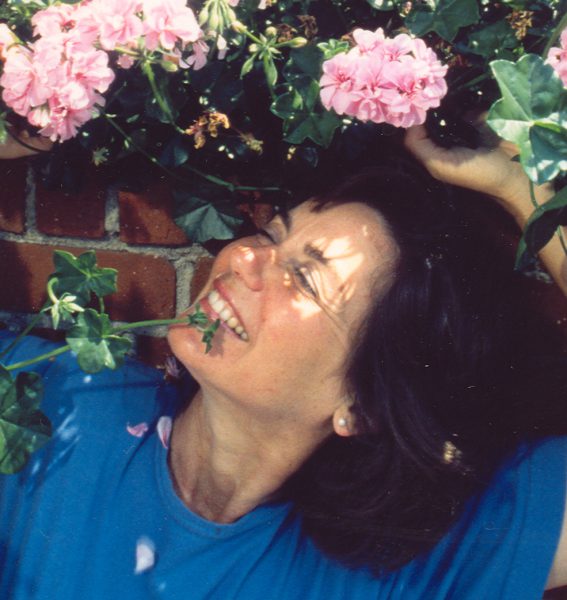 By Annlia Hill
By Annlia Hill
In the late 1930s, tuition at the Laguna Marine Laboratory was $30, and the laboratory fee $10. A bargain!
With extensive laboratory work and dissection, the smell of formaldehyde permeated the air. Ed Ricketts of the Pacific Biological Laboratories on Cannery Row in Monterey undoubtedly supplied most of the biological specimens for dissection. Ricketts (the model for Doc in John Steinbeck’s Cannery Row and Sweet Thursday) came to the Pacific coast in 1923 as a partner in a biological supply business. He traveled up and down the Pacific coast, seeing more tide pools and beaches than anyone else.
In 1930, Steinbeck met Ricketts and often accompanied him on his outdoor adventures studying the biological mysteries of the Pacific coast. Standing in a tide pool, watching the little critters, dropping them in his collecting jar, Ricketts probably looked much like Dr. Hilton did at the Laguna Marine Laboratory. Rickett’s book Between Pacific Tides (first published 1939, and now in its fifth edition) is a classic work of marine biology and was a favorite of the Alley Kids, their kids and grandkids. Even today, “every marine biologist knows just where to reach for his/her own dog-eared and water-warped copy” (Aaron Hirsch, 2014).

The Alley Kids studied sea urchins and learned that the purple ones were named “Strongylocentrotus purpuratus” and the reddish longer-spined ones “Strongylocentrotus franciscanus.” They studied the flower-like sea anemones and the shy octopi with suction-cupped tentacles, which gripped one’s arm. Sometimes they discovered a lumbering lobster, sea slugs, spider crabs, cowries, and the four types of abalone. But like Hilton and Ricketts, they didn’t just look. They sniffed (nudibranchs smell fruity, blennies like decaying kelp). They tasted, too. Lobster and abalone were delicious. Mostly, they found the smaller black abalone near the shore, but sometimes, in deeper water or on a rock, they would find the larger green, red or corrugated abalone. The “foot” was cleaned and sliced, pounded, dipped in milk, dredged in cracker crumb and then fried. Sometimes, the meat was ground and cooked as abalone cakes. Food for the Gods. The foot of the chitons and owl limpets proved too tough for the Alley Kids to eat. However, Ricketts claimed they were delicious; you just had to know how to cook them.
Since Nelson had a boat, other students would ask him to take them out in his boat to gather specimens from the kelp beds. For one student working on his master’s thesis, Merlin Eisenbise, the boat skimmed smoothly over the top of the kelp, and he collected specimens of the brightly colored nudibranchs from its leaves. Ten years later, Nelson was teaching at Citrus Union High School and in walked Merlin Eisenbise, Dean of Citrus Junior College and later the first president of Cuesta College. Laguna Marine Laboratory friends reunited.
The action at the Marine Laboratory was not limited to the shoreline. Groups often hiked up the surrounding hills and through the canyons, where they observed the wildlife (tarantulas, lizards, frogs, turtles, snakes). In fact, one of the concrete vats at the laboratory was dedicated to holding these specimens. Other times, the Alley kids hiked the hills behind Laguna Beach on their own. Barefoot, they would explore the caves, and the sandstone hollows, which were wonderful places to play. They would “hunt” small animals, never bagged any, but would investigate the snake skins, cattle skeleton and bird skulls.
The unique summer program of the Laguna Marine Laboratory ended in 1943 as the first generation of Alley Kids grew up. Facing problems with outdated facilities and lab equipment, increased traffic on the beaches, and WWII, the Marine Laboratory closed its doors after the last summer session in 1943. Pomona College sold the property in 1944 to James H. Cannon, an inventor and founder of Cannon Electric Company (later part of ITT), who planned to build a new laboratory. However, Cannon died in 1950 before the laboratory could be built.
Annlia is a 50-year resident of Laguna Beach and married to a fourth-generation Lagunan. Having walked nearly every street and alley in town, she has observed firsthand the artistic charm and imagination of residents. Annlia’s introduction to Alley Kids can be found in the July 7 edition of the Indy.




